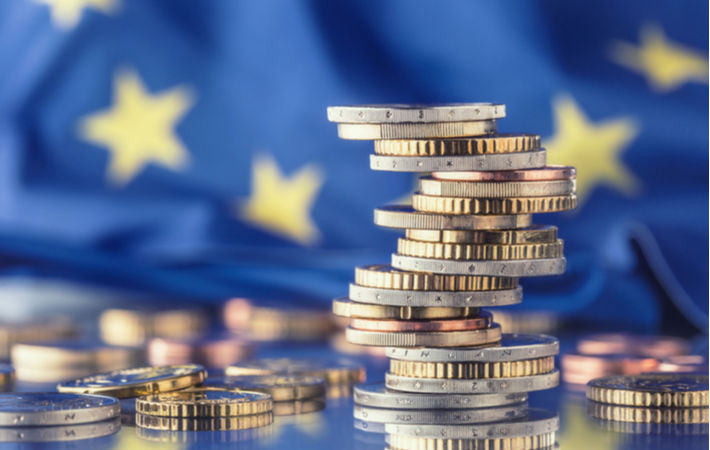Interviews
EU economy's near-term outlook looks brighter than expected in spring
10 Jul '21
3 min read

Pic: Shutterstock
The improving health situation and ensuing continued easing of virus containment measures are putting European Union (EU) economies back in motion. The near-term outlook for the European economy looks brighter than expected in spring, the European Commission said in its Summer 2021 Economic Forecast.
The contraction of gross domestic product (GDP) in the first quarter this year turned out to be marginal, and milder than suggested by Eurostat’s Preliminary Flash Estimate.
Upbeat survey results among consumers and businesses, as well as data tracking mobility, suggest that a rebound in consumption is already underway and set to strengthen in the coming months.
There is also evidence of a beginning revival in tourism activity, which should also benefit from the new EU Digital COVID Certificate. Together, these factors are expected to outweigh the temporary production input shortages and rising costs hitting parts of the manufacturing sector.
Overall, GDP is now forecast to grow by 4.8 per cent in 2021 and 4.5 per cent in 2022 in both the EU and the euro area. The volume of output is projected to return to its pre-crisis level (2019-Q4) in the last quarter of 2021, which is a quarter earlier than expected in the Spring Forecast for the euro area.
However, economic activity in the fourth quarter of 2022 would remain about 1 per cent shy of the level that was expected before the pandemic, based on an extrapolation of the Winter 2020 Interim Forecast. The speed of the recovery will vary significantly across the EU member states. Some are expected to see economic output return to their pre-pandemic levels by the third quarter of 2021, but others would take longer.
The forecast for inflation this year and next has also been revised upwards, though retaining a hump-shaped profile. Rising energy and commodity prices, production bottlenecks due to the shortage of some input components and raw materials and capacity constraints vis-à-vis booming demand both at home and abroad are expected to put upward pressure on consumer prices this year.
In 2022, pressures are assumed to moderate gradually as supply constraints resolve, order backlogs clear, and demand growth moderates. Accordingly, inflation in the EU is now forecast to average 2.2 per cent this year and 1.6 per cent in 2022. In the euro area, inflation is forecast to average 1.9 per cent in 2021 and 1.4 per cent in 2022.
Uncertainty and risks surrounding the growth outlook are high but remain overall balanced. The threat posed by the spread and emergence of variants of concern underscores the importance of a further rapid increase in full vaccination. Economic risks relate in particular to the response of households and firms to changes in restrictions and the impact of emergency policy support withdrawal.
The contraction of gross domestic product (GDP) in the first quarter this year turned out to be marginal, and milder than suggested by Eurostat’s Preliminary Flash Estimate.
Upbeat survey results among consumers and businesses, as well as data tracking mobility, suggest that a rebound in consumption is already underway and set to strengthen in the coming months.
There is also evidence of a beginning revival in tourism activity, which should also benefit from the new EU Digital COVID Certificate. Together, these factors are expected to outweigh the temporary production input shortages and rising costs hitting parts of the manufacturing sector.
Overall, GDP is now forecast to grow by 4.8 per cent in 2021 and 4.5 per cent in 2022 in both the EU and the euro area. The volume of output is projected to return to its pre-crisis level (2019-Q4) in the last quarter of 2021, which is a quarter earlier than expected in the Spring Forecast for the euro area.
However, economic activity in the fourth quarter of 2022 would remain about 1 per cent shy of the level that was expected before the pandemic, based on an extrapolation of the Winter 2020 Interim Forecast. The speed of the recovery will vary significantly across the EU member states. Some are expected to see economic output return to their pre-pandemic levels by the third quarter of 2021, but others would take longer.
The forecast for inflation this year and next has also been revised upwards, though retaining a hump-shaped profile. Rising energy and commodity prices, production bottlenecks due to the shortage of some input components and raw materials and capacity constraints vis-à-vis booming demand both at home and abroad are expected to put upward pressure on consumer prices this year.
In 2022, pressures are assumed to moderate gradually as supply constraints resolve, order backlogs clear, and demand growth moderates. Accordingly, inflation in the EU is now forecast to average 2.2 per cent this year and 1.6 per cent in 2022. In the euro area, inflation is forecast to average 1.9 per cent in 2021 and 1.4 per cent in 2022.
Uncertainty and risks surrounding the growth outlook are high but remain overall balanced. The threat posed by the spread and emergence of variants of concern underscores the importance of a further rapid increase in full vaccination. Economic risks relate in particular to the response of households and firms to changes in restrictions and the impact of emergency policy support withdrawal.
Fibre2Fashion News Desk (DS)
Popular News
































-Ltd..jpg?tr=w-120,h-60,c-at_max,cm-pad_resize,bg-ffffff)





.jpg?tr=w-120,h-60,c-at_max,cm-pad_resize,bg-ffffff)
.jpg?tr=w-120,h-60,c-at_max,cm-pad_resize,bg-ffffff)






